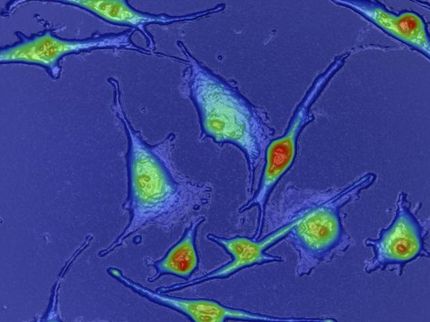Technological breakthrough paves the way for better drugs
Researchers at Karolinska Institutet in Sweden have developed the first method for directly measuring the extent to which drugs reach their targets in the cell. The method could make a significant contribution to the development of new, improved drug substances.
Most drugs operate by binding to one or more proteins and affecting their function, which creates two common bottlenecks in the development of drugs; identifying the right target proteins and designing drug molecules able to efficiently seek out and bind to them. No method has been available for directly measuring the efficiency of the drug molecules to locate and bind to its target protein. Now researchers from Karolinska Institutet have developed a new tool called CETSA (Cellular Thermal Shift Assay), which utilise the concept that target proteins usually get stabilised when drug molecules bind.
“We have shown that the method works on a wide variety of target proteins and allows us to directly measure whether the drug molecules reach their targets in cells and animal models,” says lead investigator Professor Pär Nordlund of the Department of Medical Biochemistry and Biophysics. “We believe that CETSA will eventually help to improve the efficiency of many drugs and contribute to better drug molecules and more successful treatments.”
The lack of methods to directly measure the binding of a drug to its target protein has caused a degree of uncertainty in many phases of drug development. In some cases, where drug candidates have not lived up to expectations in clinical trials on humans, it has transpired that the drug molecules have failed to bind to the right protein. The group behind the study believes that CETSA will be an important control stage and a complement to other methods.
In the present study, the researchers also examined processes that can lead to drug resistance in cells. The team believes that by virtue of its ability to determine whether existing drugs are suitable for individual patients, the method is of potential value to the practice of individualised treatment.
“We believe that the method can provide an important diagnostic tool in the treatment of cancer, for example, as CETSA can, in principle, enable us to determine which drug is most effective at targeting the proteins in the tumour,” says Daniel Martinez Molina at the Department of Medical Biochemistry and Biophysics, who leads a team in the project aiming at establishing CETSA for patient studies. “This also makes it possible for clinicians to ascertain at an early stage of treatment whether the tumour has developed a certain kind of resistance and which type of therapy could then be more suitable for the patient.”
Original publication
Takahiro Seki, E. Andreas Larsson, et al., ‘Monitoring Drug Target Engagement in Cells and Tissues Using the Cellular Thermal Shift Assay’, Science 5 July 2013.
Original publication
Takahiro Seki, E. Andreas Larsson, et al., ‘Monitoring Drug Target Engagement in Cells and Tissues Using the Cellular Thermal Shift Assay’, Science 5 July 2013.
Organizations
Other news from the department science
These products might interest you

Kjel- / Dist Line by Büchi
Kjel- and Dist Line - steam distillation and Kjeldahl applications
Maximum accuracy and performance for your steam distillation and Kjeldahl applications

AZURA Purifier + LH 2.1 by KNAUER
Preparative Liquid Chromatography - New platform for more throughput
Save time and improve reproducibility during purification

Get the analytics and lab tech industry in your inbox
By submitting this form you agree that LUMITOS AG will send you the newsletter(s) selected above by email. Your data will not be passed on to third parties. Your data will be stored and processed in accordance with our data protection regulations. LUMITOS may contact you by email for the purpose of advertising or market and opinion surveys. You can revoke your consent at any time without giving reasons to LUMITOS AG, Ernst-Augustin-Str. 2, 12489 Berlin, Germany or by e-mail at revoke@lumitos.com with effect for the future. In addition, each email contains a link to unsubscribe from the corresponding newsletter.

























































